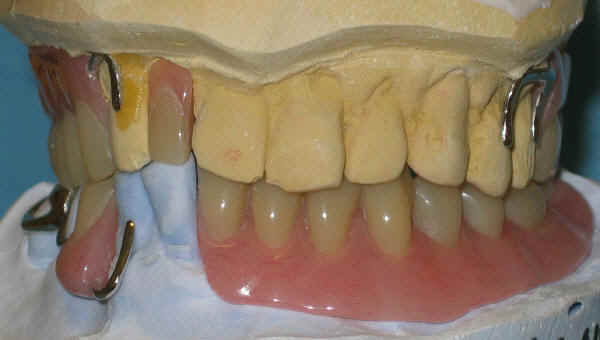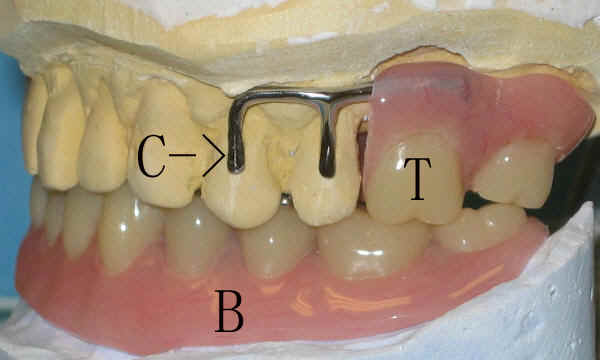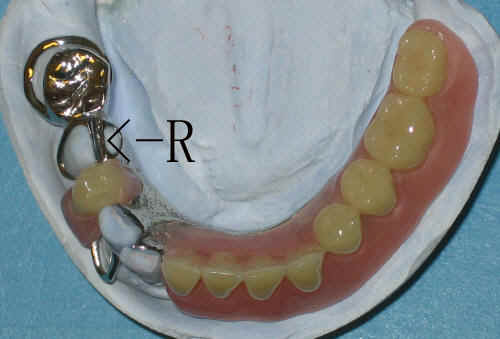 |
 |
|
Fig.1 |
Fig.2 |
|
|
 |
|
Fig.3 |
Fig.4 |
 |
 |
|
Fig.1 |
Fig.2 |
|
|
 |
|
Fig.3 |
Fig.4 |
Dental Education Lecture: Partial Denture
Partial denture is a type of fake tooth device. We can put it in for chewing and take out for cleaning. That is why we called partial denture removable. It replaces one to several (but not all) missing teeth in a dental arch. If we lose all of our teeth in an arch, we need a complete (full) denture.
Today we use a case to show how partial dentures work (Fig.1-4). Fig. 1: front view; Fig.2: side view; Fig.3 and 4 biting surface view of upper and lower jaws. This patient has lost several teeth from his top and bottom jaws. Photos were taken while the partial dentures were placed in the upper (yellow) and lower (light blue) plaster models.
A partial denture has two major components: plastic and metal. Plastic includes false teeth (T in Fig.2) to replace our missing teeth and base (red plastic, B in Fig.2) to hold false teeth together and transmit some of biting force to our jaw. The metal parts include clasp (C in Fig.2), rest (R in Fig.3 and 4) and framework (F in Fig.3). The function of clasp or hook is to hold the partial denture in place. If designed properly (low in the gum line of the back teeth), clasp does not affect appearance (Fig.4 in Bridge & Partial). The rest is a metal part that sits (rests) on the biting surface of our natural teeth and transfers some of biting force to them. Framework connects the right and left parts of a partial denture. The metal framework is relatively thin to make us feel more comfortable.
The advantages of a partial denture are easy to clean and economical. The disadvantages are difficult to wear initially and clumsy: difficulty to chew. The latter is due to part of chewing force to transfer to our soft gums. The better alternative is to place implant(s).
Xin Wei, DDS, PhD, MS 1st edition 05/09/2009, last revision 09/28/2012